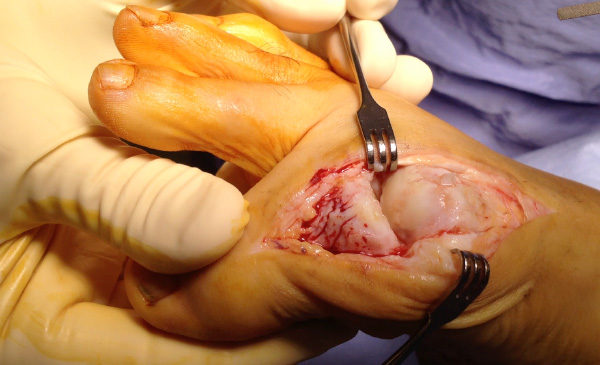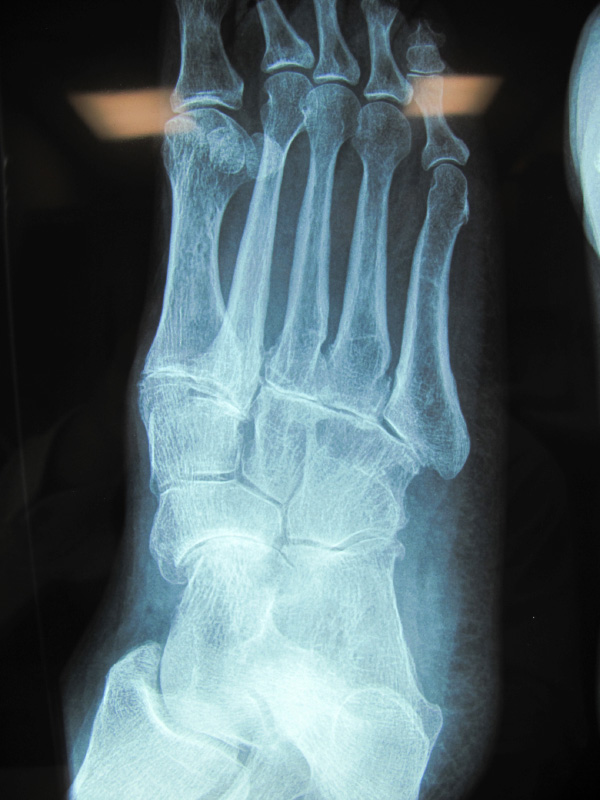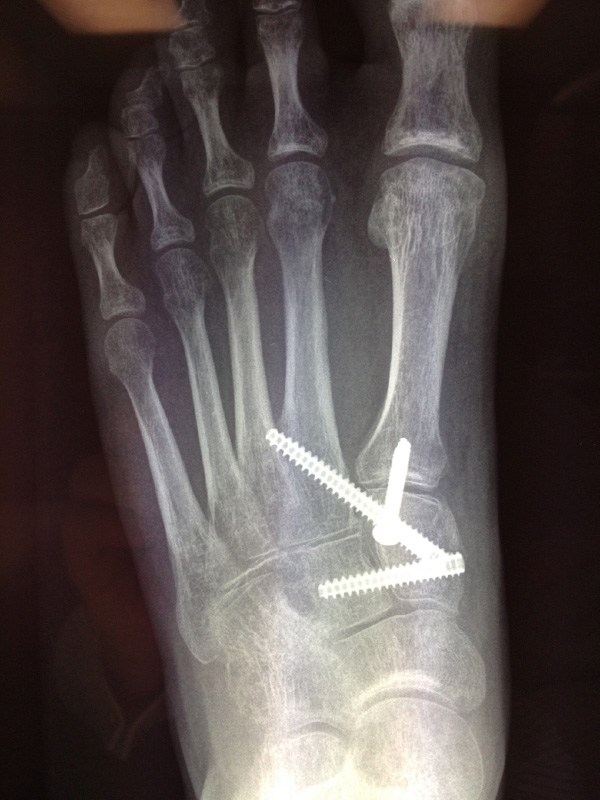
Great toe
The great toe is the most common area of wear and tear arthritis in the foot and ankle. It often arises over a long period of time, somewhat surreptitiously.
It becomes more of an issue with activity and sometimes with certain sports.
The matter seems to be more common in those who have played a good deal of sports. However, the true cause of this issue is not clear and there may well be a familial and therefore inherited pattern.
Arthritis of the great toe develops gradually and usually passes through different stages.
Stage 1 is relatively minor and often treated with a course of anti-inflammatory drugs with or without an injection.
Stage 2 is more significant and can be treated by an open operation where the bony bumps that are impinging on one another are removed. The joint is otherwise preserved.
Stage 3 is the end stage of this process and the joint is by this stage beyond salvage. It is very stiff and painful: the treatment of choice is arthrodesis (fusion). This is an operation that welds the 2 bones together. It is a superbly effective operation with which most people are very happy indeed. Whilst it might initially sound counter intuitive, the removal of the pain that often accompanies every footstep, with ability to return to all activities, without limitation in most people makes this a very attractive procedure.
Other treatment options exist, of course and these include joint replacement and interposition arthroplasty, an operation where a false joint is created with soft tissue.
The art of the matter is to make the right choice of procedure. This is where the experience of the surgeon counts.

Mid-foot
The mid-foot can also become arthritic. The patient is often female and middle-aged. There is a progressive development of pain and swelling over the mid-foot on the top. Sometimes there is also deformity.
This often responds to an injection of cortisone. However, the injection is usually of short lived effect and eventually surgery is considered. This takes the form of an arthrodesis of the affected joints. There are many joint in the mid-foot; the exact architecture of these joints needs to be assessed with Xray and CT scanning.
Recovery is pleasing in most patients with relief of pain, removal of the lumps on the top of the foot and resumption of function.

Instability (Lisfranc)
Instability of the midfoot is not uncommon in football players and all sports where there is a planted foot with significant force imparted upon the area. Motor cycle riding can often produce this injury.
The injury is serious and needs to be professionally managed by an orthopaedic surgeon who is familiar with this area, such as A/Prof Miniter. Usually surgical stabilisation is the treatment of choice, but once again CT and MRI plus plain X-ray will allow accurate characterisation of these injuries which will lead to a scientific plan of management. These injuries are not the province of non-medical practitioners. ( insert link to orthopaedic role)
